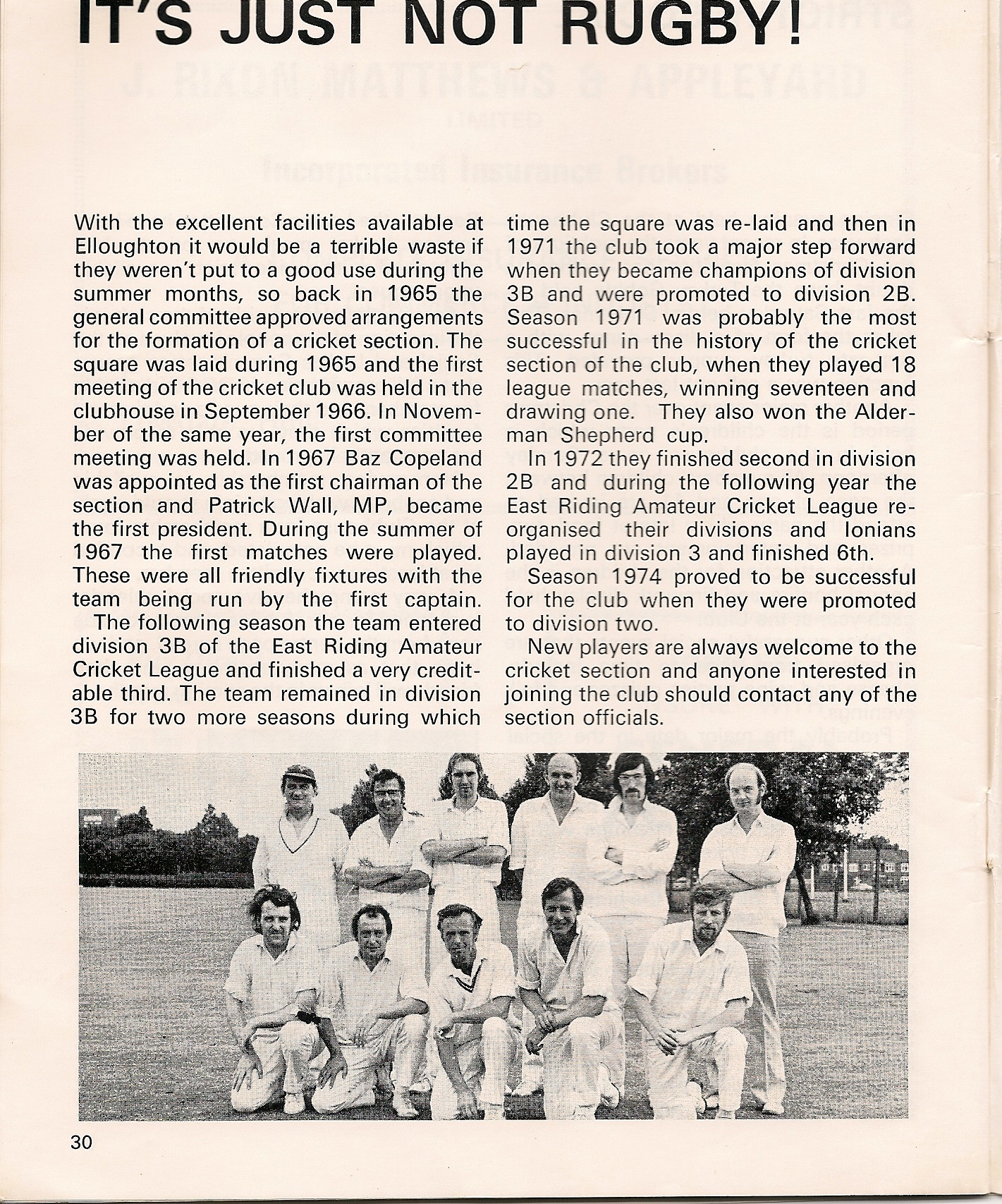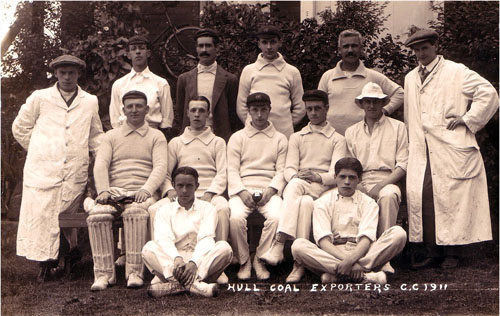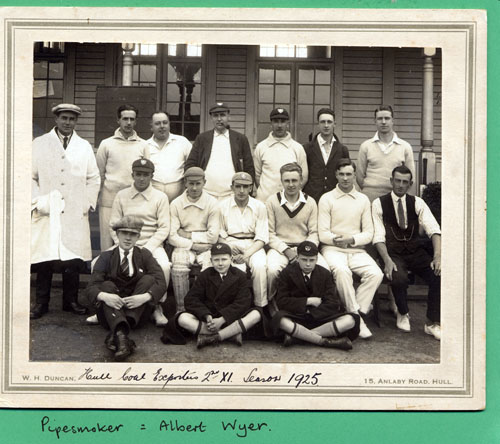 |
 |
 |
 |
 |
Club
History
Hull Ionians Coal Exporters
Hull Ionians Coal Exporters, or HICE for short, was formed when two local clubs merged in 1996. Whilst we have a detailed history of the Coal Exporters club little is known of the history of Ionians Cricket Club.
Hull Ionians Cricket Club
Hull Ionians were formed in the mid 1960's, believed to be 1965. Fortunately, although no records exist, we now have a copy of an article published in a magazine of the Ionians Rugby Club in 1976. This is reproduced here. 
It is hoped past members can verify this. The club played at the old Ionians ground in Brantingham Road, Elloughton until the sale and redevelopment forced a move to a temporary home in the grounds of Marist College, Cottingham Road. Once the new ground at Brantingham Park was ready the club returned to Elloughton. Unfortunately membership had declined and so a merger with Coalies was agreed.
Coal Exporters Cricket Club.
Coalies, as it was affectionately known, celebrated itís centenary in 2009. The club having been formed in 1909. The first available minutes are of the 7th AGM held at The Humber Coal Company Offices and then through the years AGMs and other meetings were held at a variety of venues, usually hostelries. These included the Royal Station Hotel, White Hart Hotel, CD Holmes Club etc. A key figure at the time was JH Stevenson who was secretary in 1915 and the president of the club in 1919. JH Stevenson was the Managing Director of the Coal Company and Chairman of Jutland amalgamated Trawlers.

Coal Exporters Cricket Club 1911
The resumption
of playing cricket after the war is reflected in the next AGM of 1919 which began with the
singing of the national anthem and it tells that during the war the cricket
gear was sent for use by the troops and the pavilion was used by the
military. Fixture challenges were issued in the local paper. Subscriptions were
10 shillings and sixpence.
The club
played on the Stray at the Circle, now the location of the KC stadium, until
1924 when it moved for a stay of 7 years at itís new
home. From 1931 they played at Costello Playing fields until the war then after
the war at Ferens Recreation Ground before moving to
the civil service ground at Springhead Lane. The club continued to move grounds
up until the merger with Hull Ionians when the introduction of the all
weather hockey pitch at the University meant the loss of another pitch. The
club joined the East Riding Amateur League in 1925 and then the East Yorkshire
Cricket Alliance when it was formed by the merger of local leagues.
Originally the
club was formed for members of the coal exporting and allied trades but
following the decline of such activity in the early 1930s outside players
joined the club. At the time of the 50th anniversary of the club
these included Pin McMillan, Hull FC's South African centre, a more than useful
wicketkeeper/batsman. Other names belonging to the club over the years included
Jimmy Binks who went on to be Yorkshire wicketkeeper;
Edgar Ainsworth, head of the firm T W Ainsworth and son on St Andrews Dock, who
made two appearances for Hull City in the 1930s and played for England as an
amateur football international; J W Rose who once scored 207 not out, Peter
Rose of Glenrose fish merchants and Mike Brown who
went on to be physio for Manchester United.
A number of
key figures over the years have been Joe Palmer, Ken Pocklington,
Arthur Murrow, Peter Chapman, Brian Atkinson, Noel
John, Jim Thornton, Dave Shirtliff, Geoff Mawer, John Goodfellow, Alan Thames and Barry Young. A number of
teachers and headteachers have been members of the club and well known in local sporting circles including: Arthur Murrow, Dick Sparrow, Gordon Foster, Jack Thomas, Noel
John, JimThornton, John Batty, Eric Hill, Peter Ward,
Jack Ratheram, Dave Hider (later of Hider Foods)
and Barry Young.

Coal Exporters
Cricket Club 1925
Cricket trophy that united
work rivals
In the early years of the
20th century, the desire to take possession of a battered Edwardian
cricket ball was all-consuming for the men of the Grimsby and Hull coal exporters' cricketing sides.
The North Bank versus South
Bank contest became the highlight of the local sporting calendar. In July or
August, from 1909 to 1921, teams from the rival ports would cross the River
Humber to battle it out.
The winning team was
presented with the Edwardian cricket ball that, after
each contest, had a solid silver plate affixed, recording the date and result.
Now the symbol of those long-ago games has been rediscovered.
The first match
took place on when the South Bank team won by 125 runs to 111. With the exception of the
1914-18 war, the matches took place every summer, sometimes with home and away
legs, through to 1921.
The sides were
clearly pretty evenly matched, although the results could sometimes be rather
eccentric. For example in the first match of 1911 the grimsby side gave Hull a thrashing,
winning by 184 runs to 79.
However, in the
return game, Hull retaliated, scoring 143 and bowling out Grimsby for just 51, the lowest
score of the entire series.
Sadly for the Yorkies Grimsby edged the series by eight games to
six.
For reasons that we don't
know, the trophy was presented to FE Lazenby in 1921
Ė a fact recorded on a wooden plinth on which the cricket ball stands, atop
crossed miniature wickets.
It was a relative of Mr Lazenby's who brought the trophy to the Brigg saleroom.
Thankfully the trophy has
returned to itís spiritual home and is now in the
possession of Hull Ionians Coal Exporters Cricket Club
†
